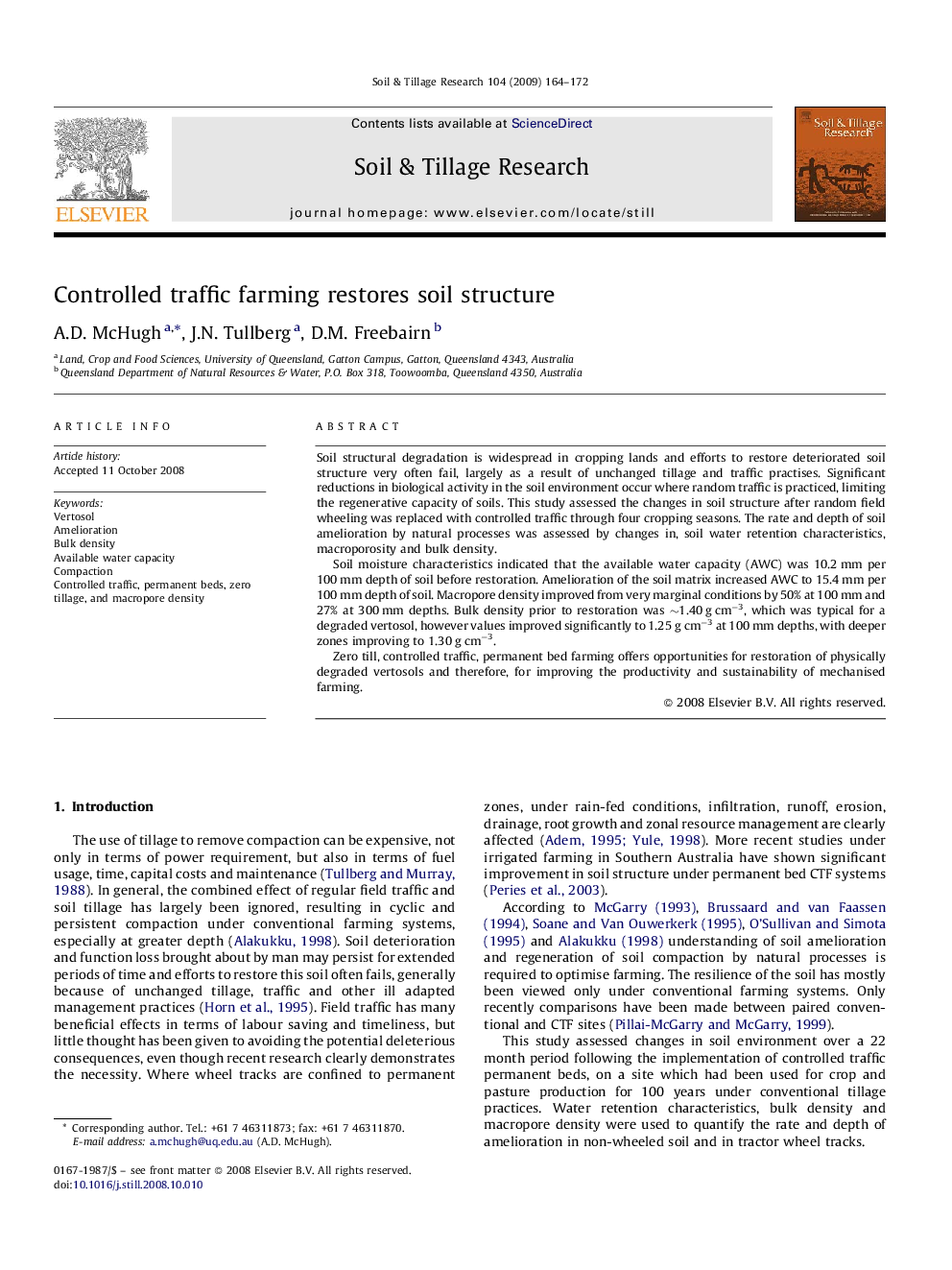| Article ID | Journal | Published Year | Pages | File Type |
|---|---|---|---|---|
| 306406 | Soil and Tillage Research | 2009 | 9 Pages |
Soil structural degradation is widespread in cropping lands and efforts to restore deteriorated soil structure very often fail, largely as a result of unchanged tillage and traffic practises. Significant reductions in biological activity in the soil environment occur where random traffic is practiced, limiting the regenerative capacity of soils. This study assessed the changes in soil structure after random field wheeling was replaced with controlled traffic through four cropping seasons. The rate and depth of soil amelioration by natural processes was assessed by changes in, soil water retention characteristics, macroporosity and bulk density.Soil moisture characteristics indicated that the available water capacity (AWC) was 10.2 mm per 100 mm depth of soil before restoration. Amelioration of the soil matrix increased AWC to 15.4 mm per 100 mm depth of soil. Macropore density improved from very marginal conditions by 50% at 100 mm and 27% at 300 mm depths. Bulk density prior to restoration was ∼1.40 g cm−3, which was typical for a degraded vertosol, however values improved significantly to 1.25 g cm−3 at 100 mm depths, with deeper zones improving to 1.30 g cm−3.Zero till, controlled traffic, permanent bed farming offers opportunities for restoration of physically degraded vertosols and therefore, for improving the productivity and sustainability of mechanised farming.
